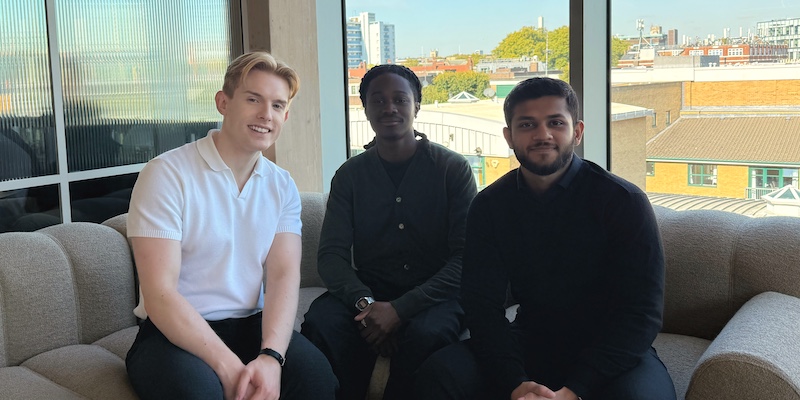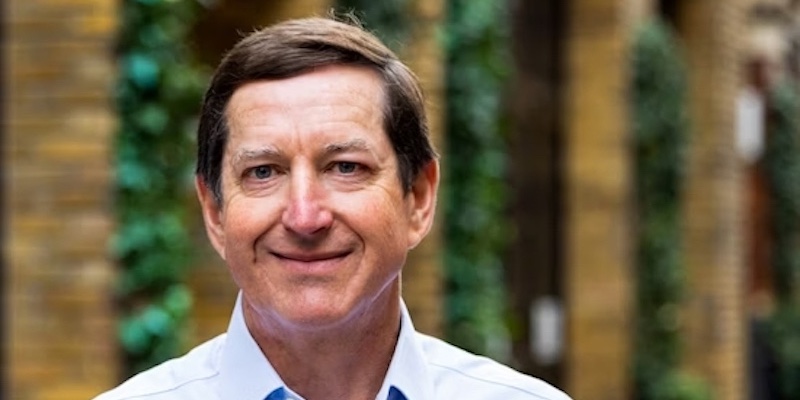How can tech for good investment help for better air quality for all: Part 2
We are working with our friends at Guy’s and St Thomas’ Charity to understand how early-stage venture capital can help tackle the negative health effects of air pollution in London and beyond. On June 9th, we held a virtual event with fellow investors and entrepreneurs. We are publishing a three-part series to summarise the discussions and our learnings. This is Part 2, catch up on Part 1 here.After taking the pulse of the investment community, we spoke to entrepreneurs tackling air pollution on the ground. Our second session was about going from proof-of-concept and pilot engagements to full commercialisation. We were joined by three excellent CEOs: Sissi Liu from MetalMark, inventing new materials for indoors air purification; Marc Ottolini from Airlabs, a monitoring solution for smart cities and mobility; and Dan White from Signol, using behaviour change for sustainability in aviation and shipping industries.Below a rough transcript of the discussions with key points, we wanted to keep it as detailed as possible to highlight the concrete examples the founders generously shared.Picking what to prioritise for business and tech developmentTalking about reconciling their internal product road map and their growth strategy with customer appetite and market-led innovation, Marc and Dan commented on regulation’s role on drawing attention to their respective solutions. Dan also mentioned the amount of meaningful data to be both a barrier and a moat for companies like them, particularly with regards to potential behavioral change in a B2B setting. They were able to expand to their second industry, shipping, because of the similarities to aviation in the amount of raw data being generated. Sissi, on the other hand, talked about the necessity of being customer-led and focusing on research to make sure they choose their beachhead market carefully. MetalMark have a material platform that can be applied across multiple industries, and even the emphasis on indoor air purification is too wide in itself because there are so many different pollutants and sources of pollution. They ended up choosing mobility as their initial market and work with rental car fleets, which are in turn motivated by customer demand.Diversifying revenue streams in light of COVID-19 and other changes in customer demandIt is impossible to talk about air quality without mentioning the pressing need to prevent airborne transmission of COVID-19 and come up with solutions that significantly improve public health. These solutions still need to be affordable and could act as building blocks that lend themselves well to moving across different sectors via different combinations. In line with that possibility, Airlabs are working on creating safe air pockets for public spaces and an accompanying data platform for municipalities for actionable insight. Marc highlighted some challenges here, particularly that legacy heating, ventilation, and air conditioning (HVAC) systems are not designed with viruses in mind and it is not feasible to try and come up with one element or feature or material that could address all concerns. This means coming up with end-to-end solutions and not only focussing on technical innovation to be able to answer customer-driven demand. Application know-how is therefore critical. Also worthwhile to note while feature/product development is guided by customer appetite, tech can not always be customer-driven as they could be unaware of potential applications (remember cars versus faster horses), so a healthy mixture between market and tech-driven development is needed. We then discussed diversifying revenue streams as the demand grows. While working on solutions applicable across different sectors, Marc highlighted the importance of early engagement with appropriate channel partners such as agents, distributors or even other companies that integrate their proprietary technology. Those parties become a big sales force and make it possible for Airlabs to sell at scale while giving them an understanding of customer needs and appetite.Converting leadsDan also talked about applicable insights and data, but in a lead conversion context. One of the two main industries Signol is currently focusing on, aviation, is going through hasty transformation. While airlines are potentially downsizing for the time being, the cargo sector is rapidly growing with companies like Amazon growing their own fleets. Signol used freemium trials as their proof-of-concept engagements, which then converted relatively easily as they were able to prove causal cost-saving, backed up by randomised trials. The value is easy for consumers to absorb because commercial and social impact is being quantified.Noisy market and still emerging standardsAs more and more products claim to improve air quality, Sissi talked about the dangers of not having industry-wide standards and regulations. These need to be context-aware, i.e. take into account different pollutants, levels of exposure and environments. COVID-19 is expected to accelerate the adoption of meaningful standards and innovative SMEs can play a role in helping shape the growing market and help differentiate effective solutions from snake oil. Prof. Paul Monks, Head of Science and Engineering College at the University of Leicester, joined the conversation here and talked about ensuring quality on a device level, potentially through a quality mark, similar to CE marking. Worthwhile to note that there are similar open-source efforts for internet of things devices, such as Better IoT (fka The Open Internet of Things Certification Mark).On this, Marc also commented on the risks that come with having regulatory-dependent business models as SMEs. More traditional players like big corporations, at times driven by corporate social responsibility policies, can also help push the clean air agenda forward by collaborating with startups and in a way lending them their credibility. Which was a great segue to our last session with Alex from Nitrous, who work with the public sector, corporates and scaleups to co-design smart cities and Freddie from EMSOL, a SaaS solution for asset air pollution data for compliance teams to discuss how startups can leverage regulation to scale. Equally, though, startups with unproven technology could benefit from a lack of regulation. Startups and public procurementAlex highlighted the need to know your customer - startups need to understand and invest in compliance for public sector procurement, for example acquiring certain certifications, and having reliable and repeatable processes. The first contract won is a validation signal and usually opens doors for more to come.Public procurement is, of course, regulation-led. Entrepreneurs cannot always afford to wait for regulation and need to be confident that it will catch up with the innovation they are creating. There needs to be a certain level of self-motivation to help improve standards and showing causation between innovation and positive societal impact could put pressure on authorities to expedite new, adaptive regulation. That seems to be the experience of the most successful startups in this space. Freddie talked about some practical challenges whilst working with public authorities. More often than not, traditional infrastructure is not compatible with new tech so companies need to find retrofit solutions which might mean spending more resources and ending up building bigger end-to-end solutions as opposed to contributing with your own specific piece of the solution. Nevertheless, there is benefit in keeping a close eye out on relevant tenders and assessing whether there is a place for your particular product or service in the wider public procurement ecosystem.Aligning VC objectives with those of the governments’The model of innovation is shifting. Previously, the governments spearheaded big tech initiatives but now, tech is evolving at a much faster rate and the government is consistently trying to catch up. This has placed more pressure on the governments to work closer to agile, innovative companies. Alex reminded us that by legislation, 33% of public sector spending needs to go to SMEs. The opportunity here is clear and air pollution startups could make a case around reliable cash flow while fundraising from VCs.VCs, particularly at seed stage, need to take more initiative to educate themselves around public sector processes in order to ensure their portfolio companies are properly placed for public procurement. These slower procurement processes might delay the rapid growth expectations that are typical to VC exit scenarios - is 10 years reasonable for this market? At this stage, our investor guests started chiming in - the overall sentiment was that more collaboration needs to happen amongst seed, Series A and growth-stage investors to better align risk assessment at each stage and develop cohesion between expectations of commercial traction, as well as societal impact.Effective collaboration can match commercial opportunity with societal impactThere is increasingly more mainstream validation in the VC community towards making purpose-driven investments. In BGV’s experience, we can observe that through our portfolio’s fundraising rounds, with investors like Beringea, Triple Point and Longwall joining. In the air pollution context, it is essential that founders present the wide-spread, global opportunity of their technology and explain how it can be transferable between different geographies when talking about their projected growth. It is important, though, to first ensure that products and services can be meaningfully localised through validation closer to home. Then, expansion to other markets can be addressed, only when it is clear that the venture does, in fact, tackle the issues more pertinent to those other geographies. For example, cities in certain Asian markets have different needs than the UK as a result of a difference in air pollutants. On this point, we had a short conversation between a deep-tech and an impact investor: the former recounted an anecdote where it was hard to find co-investors to bring in to a big impact deal while the latter talked about their co-investments with sector-specific VCs and CVCs. There is an opportunity for all investors to reduce their risk and learn from one another in collaboration. In fact, if we want to tackle the global crises we are all facing, generalist investors, impact investors, commercial entities and founders cannot afford to work in silos. ConclusionsThe challenges covered in these sessions point to a range of potential ways in which investors and like-minded organisations could intervene, for example, by providing patient capital or supporting the piloting of solutions in London. Encouragingly, such interventions resonate with our partner Guy’s and St Thomas’ Charity’s wider work with startups for promoting better health outcomes for urban populations. See their Childhood Obesity Programme and Good Food Fund in collaboration with Big Society Capital (one of our LPs at BGV), Ascension Ventures and Mission Ventures for an excellent example of how wider sector engagement is demonstrating the role that capital and specialist expertise can play in solving related challenges in South London and beyond.In Part 3, we will be summarising key findings from our wider research on challenges and opportunities for early-investment to help tackle air pollution, an area of interest for our partner Guy’s and St Thomas’ Charity who will be featuring it in their air pollution programme hub, thanks again to Matt from their team for his contributions to this piece from an urban health perspective. Massive thanks to Sissi from Metalmark, Marc from AirLabs, Dan from Signol, Alex from Nitrous and Freddie from EMSOL for sharing their invaluable insight with us. In the meanwhile, please reach out if you have ideas for how best we can support the health of individuals by tackling air pollution.




